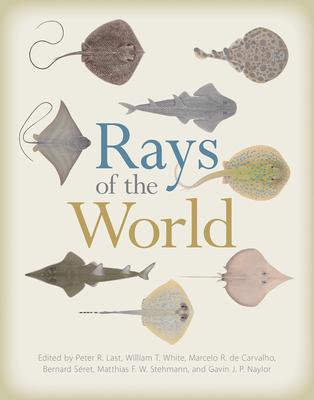Rays are among the largest fishes in the sea and have colonized all oceans. The first cousins of sharks, rays evolved from early Mesozoic or late Paleozoic shark-like ancestors. They also share with sharks many life history traits--all are carnivores or scavengers--and a multitude of morphological and anatomical characters, such as their skeletons built of cartilage. There are six families and 633 valid named species of rays, but additional undescribed species exist for many groups. Our knowledge of many of the ray species is based on only a small number of individuals, and few of them have been researched well enough to gain even a basic understanding of their biology and life history. The insights gained from molecular analyses of more than three-quarters of living ray species, combined with reinvigorated morphological investigations, have led to many changes in both ray classification and the underpinning species diversity. The recognition of whole new families and genera of rays, and many newly described species, have resulted from this research.
In the last century, growth in the trade of rays for food, fins, leather, and curios has fueled increasing prices and demand for them in many countries. This has driven significant increases in ray take by commercial fisheries globally, particularly in the tropical Indo-Pacific. The largely unconstrained growth in ray catch, low productivity of most ray species, and general lack of management of their fisheries has lead to growing concern over the sustainability of stocks throughout the world. Rays of the World is the first complete pictorial atlas of the world's ray fauna and features paintings of more than six hundred species by the fish artist Lindsay Marshall. This comprehensive overview documents the world's ray fauna and promotes wider public interest in the group. It also provides general identifying features and distributional information about this iconic, but surprisingly poorly known, group of fishes.
A valuable collection of paintings of all living rays (as well as sharks) has been compiled as part of a multinational research initiative (Chondrichthyan Tree of Life Project) to gain a better understanding of the diversity and evolution of this group. Images sourced from around the planet have been used by the artist to illustrate all of the rays found in oceans and some tropical freshwaters of the world.
